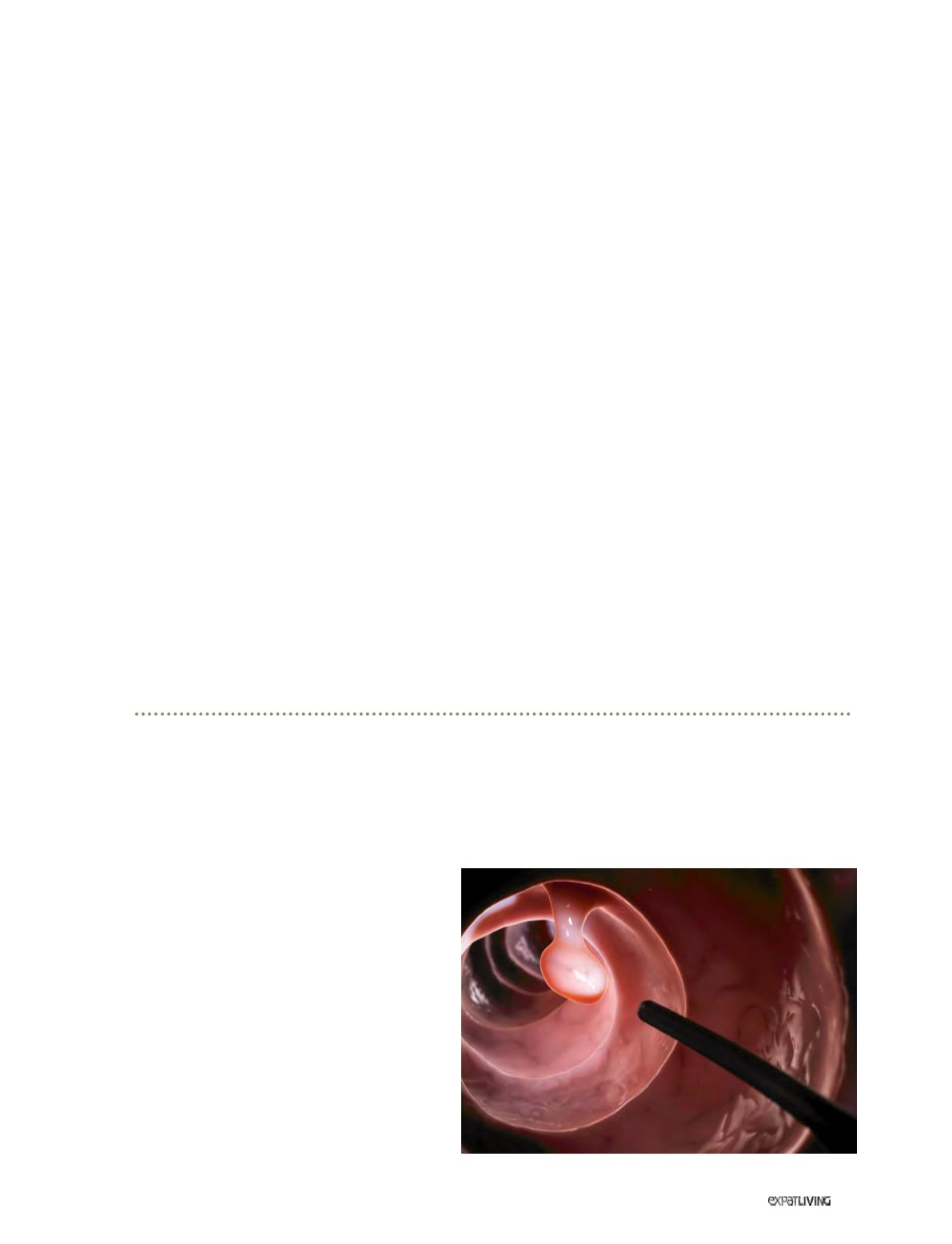

CRITICAL ISSUES
307
November14
QUESTION #6
Problematic piles – what’s to be done?
It would be hard to argue with consultant surgeon DR
BERNARD LIM’s opinion that when it comes to piles,
prevention is better than cure. Though this potentially painful
condition is very common – a third of the population is likely to
have them – a good diet and healthy bowel habits effectively
lower the risk. Avoid sitting on the toilet bowl for long periods
while reading or using electronic devices, says Dr Lim, and
avoid any unnecessary straining.
What are piles?
They’re anal “cushions”, made up mainly of blood vessels.
If they start bleeding, prolapse (project outside the anal
sphincter) or become thrombosed and cause itching or pain,
they may require treatment. More importantly, the symptoms
of piles may indicate something more serious further in, such
as colorectal cancer.
What are the risk factors?
They include: being constipated and straining a lot, being
pregnant, or, in some cases, simply being old.
When should I seek medical help?
Seek medical attention if you have any worrying perianal
symptoms: only examination will reveal whether you have a
benign case of piles or something malignant like cancer. If
QUESTION #7
Colorectal polyps and cancer – what’s the
connection?
With colorectal cancer being the top cancer in
Singapore, as it is in most developed countries,
colorectal surgeon DR QUAH HAK MIEN must be a
busy man. The good news? This is a preventable form
of cancer – but you must go for screening.
What are colorectal polyps?
Tumours of the colon and rectum are abnormal
growths arising from the cells lining the inner wall of the
large intestine. Benign tumours of the large intestine,
called polyps, can become malignant (cancerous)
over time.
How can we avoid colorectal disease in the
first place?
Reduce your intake of fat from animal sources such
as red meat; avoid eating meat cooked at high
temperatures; limit alcohol intake and quit smoking;
exercise regularly and stay physically active; eat fruit,
vegetables and whole grains, which contain fibre and
Cazuma, Sebastian Kaulitzki | Dreamstime.com
symptoms persist despite treatment, then we need to investigate
further up the colon.
What is the treatment for piles?
Treatment for piles is individualised according to the symptoms
and the degree of severity.
• The simplest form of symptomatic treatment is with
medication
and topical creams
.
• If the condition persists, we can
ligate or inject
the piles.
• An effective treatment for bleeding piles is
transanal
haemorrhoidal dearterialisation (THD)
, whereby we locate
the vessel with an ultrasound probe and stitch it up to cut off
the blood supply to the symptomatic pile.
• For large, prolapsed piles, we may consider surgery: either a
conventional haemorrhoidectomy
where we excise the piles
with various forms of energy devices, or by means of a
stapled
haemorrhoidectomy
.
Recovery time?
It usually ranges from a few days to 14 days before the patient
can return to work, depending on the severity of the piles and the
treatment method used.
Pacific Healthcare Specialist Centre
290 Orchard Road
#19-01 Paragon
6510 1993 | pachealthholdings.com
antioxidants. And screening is essential. The least you should do is an
annual stool test to check for occult blood (a minute quantity of blood
in the stool), but colonoscopy is the most accurate and most effective.
Who is most at risk of colorectal cancer?
About 90 percent of our patients are over the age of 50, but it can
happen at any age. Risk factors include: a family history of colorectal



















